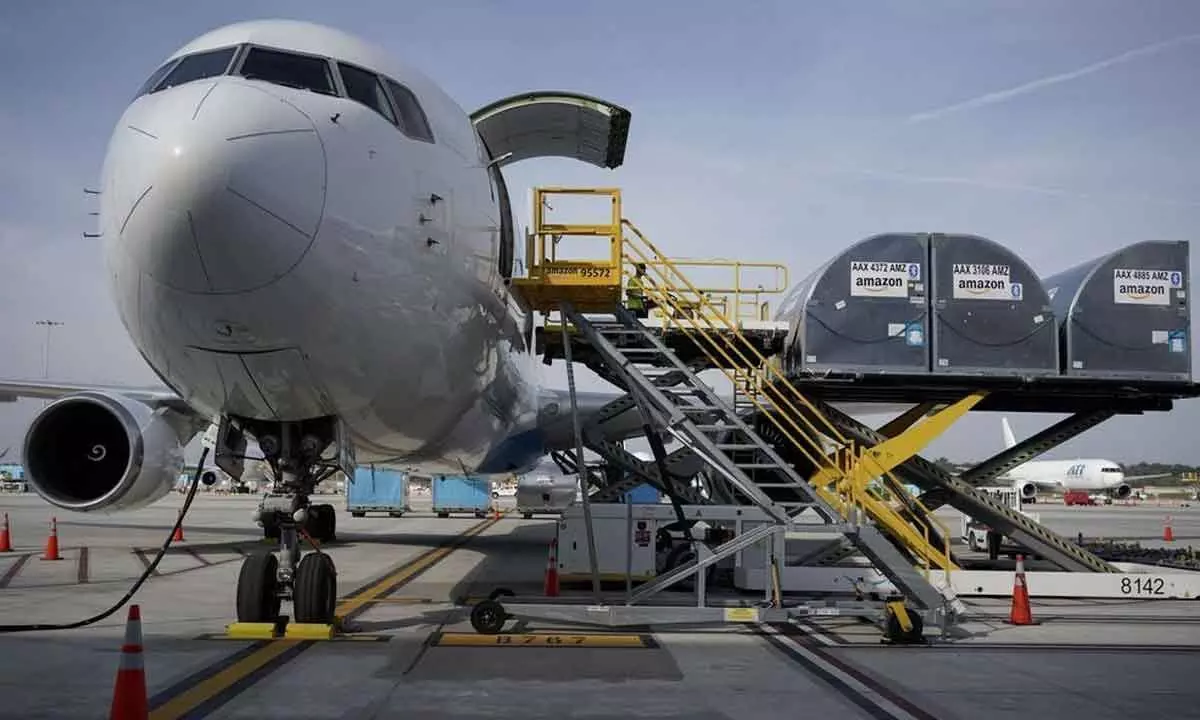Aviation’s resilience dictates air cargo business
Cargo revenues of the airline industry are likely to fall to $111 bn this year
image for illustrative purpose

Expense growth is expected to be slightly lower at 6.9 per cent for a total of $914 billion. Some 4.7 billion people are expected to travel in 2024, a historic high that exceeds the pre-pandemic level of 4.5 billion recorded in 2019
India has an ambitious target of achieving 10 million tonnes of annual cargo throughput by 2030. Going by the current rate of economic growth and the positive sentiments about the country emerging as a manufacturing hub for global high- tech companies the target looks real and doable. The tag of the third largest aviation market and the fifth largest economy in the world are factors that support such growth numbers. This panel will navigate the headwinds and tailwinds in the 10 million tonne flight-path.
Cargo revenues of the airline industry are expected to fall to $111 billion in 2024, down sharply from an extraordinary peak of $210 billion in 2021 but above 2019 revenues of $101 billion. Cargo volumes are expected to be 58 million tonnes and 61 million tonnes in 2023 and 2024, respectively, according to the latest update from the International Air Transport Association (IATA).
Yields will continue to be negatively impacted by the continued growth of belly capacity (related to strong growth on the passenger side of the business) while international trade stagnates, the update added.
"Yields are expected to further correct towards pre-pandemic levels with a 32.2 percent decline in 2023 followed by a 20.9 per cent decline expected in 2024. They will, however, remain high by historical standards. Note that yield progression has been extraordinary in these last years (-8.2 percent in 2019, +54.7 percent in 2020, +25.9 percent in 2021, +7 percent in 2022, -32.2 percent in 2023)," is pointed out.
Cargo revenues in 2023 were expected to be around $134.7 billion, which is below the June estimate of $142.3 billion.
"The cargo sector continued to face challenges in 2023 with a slowdown in demand due to macro-economic headwinds and a slowdown in global trade. Despite a decline in cargo tonne-km (CTKs) from the 2022 levels, signs of improvement emerged in the second half of 2023. Regional variations were observed with Latin America achieving annual growth in CTKs, and North America and Africa surpassing their pre-Covid levels. Overall industry CTKs are expected to remain below 2022 levels in 2023 with a forecast 4.5 per cent growth in 2024."
Cargo capacity, measured in available cargo tonne km (ACTKs), expanded consistently since the beginning of 2023, driven mostly by the resurgence of passenger aircraft belly-hold capacity on international routes.
"Consequently, global air cargo capacity surpassed the pre-Covid level in April 2023. As of September, industry-wide ACTKs exceeded its pre-pandemic level by four per cent." Airline industry’s net profits are expected to reach $25.7 billion in 2024 (net margin of 2.7 per cent). That will be a slight improvement over 2023, which is expected to show a net profit of $23.3 billion (2.6 per cent net profit margin). The total revenues in 2024 are expected to increase 7.6 percent year over year to a record $964 billion.
Expense growth is expected to be slightly lower at 6.9 per cent for a total of $914 billion.
Some 4.7 billion people are expected to travel in 2024, a historic high that exceeds the pre-pandemic level of 4.5 billion recorded in 2019.
Willie Walsh, Director General, IATA says: “Considering the major losses of recent years, the $25.7 billion net profit expected in 2024 is a tribute to aviation’s resilience. People love to travel and that has helped airlines to come roaring back to pre-pandemic levels of connectivity. The speed of the recovery has been extraordinary; yet it also appears that the pandemic has cost aviation about four years of growth.”
From 2024, the outlook indicates that we can expect more normal growth patterns for both passenger and cargo.
Industry profits must be put into proper perspective. While the recovery is impressive, a net profit margin of 2.7 per cent is far below what investors in almost any other industry would accept.
Of course, many airlines are doing better than that average, while a handful is struggling. But there is something to be learnt from the fact that, on average, airlines will retain just $5.45 for every passenger carried. That’s about enough to buy a basic grande latte at a London Starbucks.
But it is far too little to build a future that is resilient to shocks for a critical global industry on which 3.5 per cent of GDP depends and from which 3.05 million people directly earn their livelihoods.
Airlines players will always compete ferociously for their customers but they remain far too burdened by onerous regulation, fragmentation, high infrastructure costs and a supply chain populated with oligopolies." The update highlighted risks for the industry including global economic developments, war, supply chain issues and regulatory challenges.

